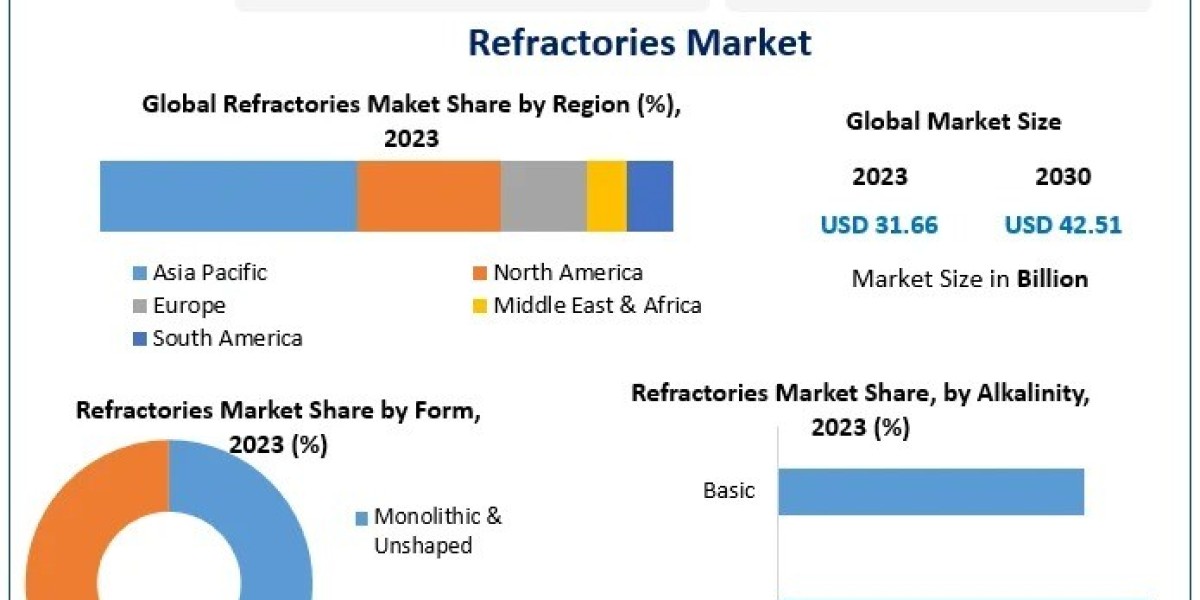Light Emitting Diode (LED) technology has transformed the lighting industry, offering a more energy-efficient, durable, and environmentally friendly alternative to traditional lighting solutions. Unlike incandescent and fluorescent bulbs, which rely on heated filaments or gases to produce light, LEDs create light through electroluminescence, a process where an electric current passes through a semiconductor material. This mechanism not only reduces energy consumption but also extends the lifespan of LEDs, making them a preferred choice in various sectors, from residential and commercial lighting to automotive, industrial, and display applications. As LED technology continues to advance, it’s reshaping the way we think about illumination and sustainability.
More info : https://www.econmarketresearch.com/industry-report/led-market/
The Science Behind LEDs: How They Work
At the heart of LED technology is the semiconductor, typically made of materials like gallium arsenide or gallium phosphide. When an electric current passes through the semiconductor, it excites electrons, which then emit photons, or light particles. This process, known as electroluminescence, allows LEDs to produce light with minimal heat. The color of the LED light depends on the specific semiconductor materials and impurities used, enabling LEDs to emit a wide spectrum of colors. Unlike incandescent bulbs, which waste energy as heat, LEDs are highly efficient in converting energy directly into light. This efficiency not only reduces power consumption but also extends the operational life of LEDs, making them ideal for sustainable lighting solutions.
Energy Efficiency and Cost Savings: The LED Advantage
One of the primary benefits of LED technology is its exceptional energy efficiency. LEDs consume up to 80% less electricity compared to traditional incandescent bulbs and 50% less than compact fluorescent lamps (CFLs), making them highly cost-effective in the long term. Although the initial cost of LEDs can be higher, their longer lifespan—often 25,000 to 50,000 hours—means fewer replacements and maintenance expenses over time. This efficiency translates to significant cost savings, especially in commercial and industrial settings where lighting operates continuously. As energy prices continue to rise and environmental concerns drive demand for low-energy solutions, LEDs stand out as a sustainable choice for reducing both operational costs and carbon footprints.
Durability and Longevity: Why LEDs Outlast Other Lighting Technologies
LEDs are designed to withstand challenging conditions, including temperature fluctuations, vibrations, and impact, making them highly durable compared to traditional bulbs. Unlike incandescent and fluorescent bulbs, LEDs do not rely on fragile filaments or delicate glass enclosures, reducing the risk of breakage. The absence of filaments also means LEDs can last significantly longer, with many models providing up to 50,000 hours of light. This longevity is particularly beneficial in applications where maintenance is difficult or costly, such as street lighting, industrial facilities, and outdoor signage. LED technology’s durability and extended life cycle make it an attractive option for both residential and commercial users seeking reliable lighting solutions.
Environmental Impact: LEDs and Sustainability
LEDs contribute to environmental sustainability in several ways. Their energy efficiency reduces the demand on power plants, leading to lower greenhouse gas emissions associated with electricity production. Additionally, LEDs are free from toxic elements like mercury, commonly found in CFLs, making them safer to dispose of and less harmful to the environment. Many LED products are recyclable, further enhancing their eco-friendly profile. With the global focus on reducing carbon footprints and minimizing waste, LEDs align with broader sustainability goals, offering an environmentally responsible choice for lighting. As green building certifications and environmental regulations gain momentum, LED technology plays a crucial role in supporting eco-friendly design and construction.
Applications of LED Technology: Versatility Across Industries
The versatility of LED technology allows it to serve a wide range of applications across industries. In residential and commercial settings, LEDs are used for general lighting, offering bright, consistent illumination with minimal energy consumption. In the automotive industry, LEDs have become popular for headlights, brake lights, and interior lighting, providing clear visibility and fast response times. Industrial facilities benefit from high-bay LEDs for warehouses and factories, where reliability and durability are essential. LEDs are also crucial in display technology, found in screens, billboards, and signage due to their vibrant colors and high brightness levels. With recent advancements, LED applications have expanded to include horticultural lighting, UV disinfection, and even medical devices, showcasing their adaptability and broad-reaching impact.
Innovations in LED Technology: Smart Lighting and Beyond
The LED industry is constantly evolving, driven by advancements in materials and manufacturing techniques. Smart LED lighting is a significant trend, allowing users to control lighting remotely through apps, voice commands, or smart home systems. These systems can adjust brightness, color temperature, and even sync with daily schedules, enhancing convenience and energy efficiency. Organic LEDs (OLEDs), another innovation, offer flexible, thin lighting panels ideal for displays and architectural applications. Additionally, advancements in miniaturized LEDs have led to microLED displays, which deliver sharper, more vibrant images for screens. These innovations are opening new possibilities in lighting design, display technology, and beyond, positioning LEDs at the forefront of lighting advancements.
LED Color Temperature and Quality: Tailoring Light to Suit Every Need
LED lighting offers a wide range of color temperatures, allowing users to select lighting that suits specific environments and tasks. Measured in Kelvins (K), color temperature can range from warm, soft tones (2700K-3000K) ideal for relaxation, to cooler, daylight-like tones (5000K-6500K) that enhance focus and productivity. High-quality LEDs also provide high color rendering indexes (CRI), accurately displaying the colors of objects and creating a pleasant visual environment. This adaptability makes LEDs suitable for everything from cozy home lighting to bright task lighting in offices and retail settings. By offering a customizable lighting experience, LEDs improve both functionality and comfort, contributing to overall well-being in various environments.
Challenges and Limitations: Addressing Heat Management and Initial Costs
While LED technology has numerous advantages, it also faces some challenges. Heat management is essential in high-power LEDs, as overheating can affect performance and reduce lifespan. Advanced heat sinks and cooling systems are integrated into LED designs to dissipate heat effectively, but these components can add to the cost. Additionally, the higher initial price of LEDs remains a barrier for some consumers, although the long-term savings often offset this expense. Innovations in manufacturing and design continue to address these limitations, making LEDs more accessible and affordable. Despite these challenges, LEDs remain a highly competitive option due to their longevity, efficiency, and versatility.
The Role of LED Lighting in Human Health and Productivity
Research indicates that LED lighting can impact human health and productivity by influencing circadian rhythms, mood, and focus. Exposure to different color temperatures at appropriate times of day can support natural sleep-wake cycles and reduce fatigue. For instance, cool, blue-rich light during the day can boost alertness, while warmer tones in the evening can help prepare the body for rest. This concept, known as human-centric lighting, has become popular in workplaces, schools, and healthcare facilities, where the right lighting can enhance focus, reduce eye strain, and promote well-being. By tailoring LED lighting to align with natural rhythms, organizations are creating environments that support both health and productivity.
The Future of LED Technology: Efficiency, Integration, and New Applications
The future of LED technology is marked by increasing efficiency, further integration with smart systems, and expanding applications. Advances in LED materials and manufacturing are expected to improve energy efficiency even further, reducing both costs and environmental impact. Integration with the Internet of Things (IoT) is also on the rise, enabling connected lighting systems that interact with sensors and other smart devices. This connectivity allows for automated lighting adjustments based on occupancy, daylight levels, and personal preferences. Additionally, LEDs are finding novel applications in areas like Li-Fi (light-based data transmission), horticultural lighting, and UV sterilization. As LED technology progresses, it will continue to drive innovation across industries, offering sustainable solutions that enhance both function and experience.
Contact Info
Phone Number: +1 812 506 4440
Email : [email protected]








